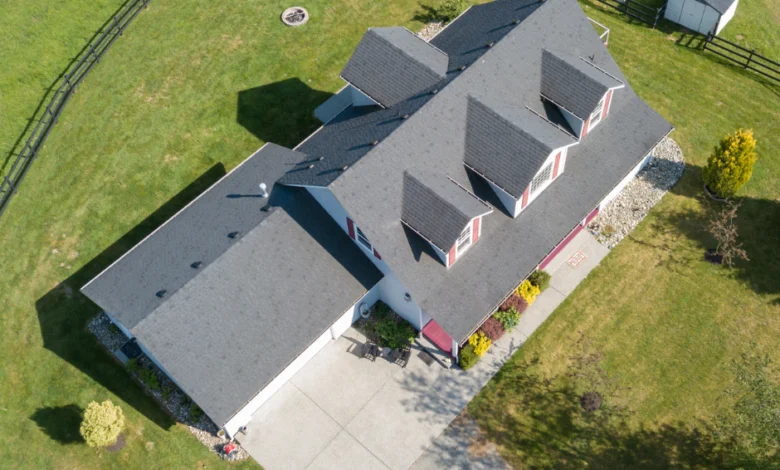Understanding Roof Replacement Costs for Your 3000 Sq Ft Home

Replacing a roof is one of the most significant home improvement projects a homeowner can undertake. It’s not just about aesthetics; it’s about protecting your home, ensuring structural integrity, and even improving energy efficiency. But we know what you’re wondering: how much does it cost to replace a roof on a 3000-square-foot house?
In this comprehensive guide, we’ll break down the costs, influencing factors, material options, and budgeting tips to help you make an informed decision. Let’s dive in!
What Influences the Cost to Replace a Roof on a 3000 Sq Ft House?
When it comes to roof replacement, costs can vary widely depending on several factors. Here’s what you need to know:
1. Roof Size vs. Roof Surface Area
While your home may be 3000 square feet, the actual roof surface area could be significantly larger due to the roof’s slope and design. For example, a steeply pitched roof or one with multiple angles and slopes (such as dormers or valleys) will have a greater surface area, which increases the cost.
- One-story homes: Typically, they have less roof surface area compared to multi-story homes, making them more cost-effective to replace.
- Two-story homes: These often require additional labor, materials, and equipment due to increased complexity and height.
2. Roof Complexity
The shape and style of your roof significantly impact role in the overall cost. A simple gable roof (an A-shaped roof) is straightforward to replace, whereas a cross-gable or hip roof with multiple slopes, valleys, and dormers takes more time and expertise, driving up labor costs.
3. Geographic Location and Labor Rates
The cost of labor can vary depending on the location. Urban areas or regions with high demand for roofing services tend to have higher labor rates. Additionally, locations prone to extreme weather (like hurricanes or heavy snow) may have stricter building codes, which can further influence costs.
4. Accessibility and Height
Suppose your roof is particularly high or difficult to access due to landscaping or other obstacles. In that case, contractors may charge extra for the additional time and effort required to complete the project safely and efficiently.
5. Condition of Existing Roof
- If your existing roof is in poor condition, with extensive damage, mold, or rot, contractors may need to reinforce the roof deck or replace damaged sections before installing the new roof.
- The cost of removing and disposing of old roofing materials (known as the tear-off process) also adds to the total expense.
Summary of Cost Influencing Factors
Each of these factors—from roof complexity to labor rates—affects the overall price of replacing a roof. Understanding these variables will help you anticipate costs and plan accordingly.
Average Cost Range for Replacing a Roof on a 3000 Sq Ft Home
Now, let’s get into the numbers. The cost to replace a roof on a 3,000-square-foot house can vary significantly depending on the materials, location, and complexity of the project.
National Average Cost Overview
On average, roof replacement costs for a 3000 sq ft home range from $11,000 to $30,000. However, premium materials or complex jobs can significantly increase costs.
Typical Cost Breakdown
Here’s a quick breakdown of costs based on materials and home complexity:
Material/ComplexityCost RangeDetails
Basic Asphalt Shingles $9,000 – $15,000 Affordable, standard option, 20-30 year lifespan
Mid-Grade Architectural Shingles Around $21,000 Better durability and aesthetics
Premium Materials (e.g., Slate) $45,000 – $90,000 High-end look with exceptional longevity
One-Story vs. Two-Story Homes
- One-story homes: Easier access and less complexity often result in lower costs.
- Two-story homes: Increased labor and safety measures can add 10-20% more to the total cost.
Cost Breakdown by Roofing Material
The type of roofing material you choose will have the most significant impact on your overall cost. Let’s explore the most common options:
1. Asphalt Shingles
- Cost: $7,450 – $16,850
- Lifespan: 20-30 years
- Pros: Affordable, widely available, easy to install.
- Cons: Shorter lifespan compared to premium materials.
2. Metal Roofing
- Cost: $15,000 – $35,000+
- Lifespan: 40-70 years
- Pros: Durable, energy-efficient, lightweight.
- Cons: Higher upfront cost, noisier during rain.
3. Slate and Tile Roofing
- Cost: $45,000 – $90,000
- Lifespan: 50-100 years
- Pros: Extremely durable and visually stunning.
- Cons: Heavy, requires reinforced roof structures, expensive.
4. Other Materials
- Wood Shakes: Natural look, but requires regular maintenance.
- Synthetic Options: Mimic premium materials at a lower cost.
Here’s a quick comparison table:
MaterialCost RangeLifespanProsCons
Asphalt Shingles $7,450 – $16,850 20-30 years Affordable, easy to install Shorter lifespan
Metal Roofing $15,000 – $35,000+ 40-70 years Energy-efficient, durable Expensive upfront
Slate/Tile $45,000 – $90,000 50-100 years Premium look, long-lasting Heavy, expensive
Labor Costs and Additional Expenses
Labor typically accounts for a significant portion of roof replacement costs.
1. Labor Costs
- Range: $10,000 – $14,000 for a 3000 sq ft roof.
- Complex roofs with steep slopes or multiple angles may require more time and specialized skills, increasing labor costs.
2. Additional Expenses
- Tear-Off Fees: Removing old materials can cost $1,000 – $3,000.
- Permit Fees: Local building codes may require permits, which can cost a few hundred dollars.
- Structural Repairs: If the roof deck or framing needs reinforcement, expect to pay extra.
3. Seasonal Factors
Roofing projects during peak seasons (like summer) may cost more due to the high demand for contractors.
How to Budget for Your Roof Replacement
1. Get Multiple Quotes
Always get at least three quotes from reputable contractors. Compare not just the price but also warranties and reviews.
2. Use Online Calculators
Roof replacement cost calculators can provide a rough estimate based on your roof’s size, materials, and location.
3. Financing Options
If the upfront cost is overwhelming, consider exploring financing options such as home improvement loans or payment plans offered by contractors.
4. Insurance Considerations
Check your homeowner’s insurance policy to see if roof replacement costs are partially covered due to damage (e.g., from storms).
Benefits of Investing in a Quality Roof Replacement
A new roof is a big investment, but it comes with significant benefits:
- Protection: Shields your home from water damage and extreme weather.
- Energy Efficiency: Modern materials can reduce heating and cooling costs.
- Increased Home Value: A new roof enhances curb appeal and resale value.
- Lower Maintenance Costs: A high-quality roof reduces the need for frequent repairs.
Frequently Asked Questions (FAQs)
How long does a roof replacement take?
Most projects take 1-3 days, depending on complexity and weather.
Can I replace a roof in winter?
Yes, but cold temperatures can affect material installation and curing times.
What are signs my roof needs replacing?
Common signs include leaks, missing shingles, sagging, and visible wear.
How do I choose the right contractor?
Look for licensed, insured professionals with strong reviews and warranty options.
Conclusion
Replacing the roof on a 3000-square-foot house is a significant investment, but understanding the costs and options can help you plan effectively. From material choices to labor considerations, every detail matters.




